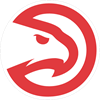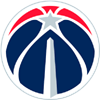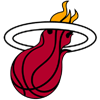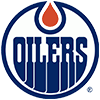This final installment of the Wide Receiver Job Battles series will look at the Giants, Jets, San Francisco and Tampa Bay. The first one (here) looked at Arizona, Baltimore and Buffalo, the second one (here) looked at Cincinnati, Denver and Green Bay, and the third one (here) looked at Indianapolis, the Chargers, Minnesota and New England.
Darius Slayton vs. Wan'Dale Robinson vs. Jalin Hyatt, NYG
Malik Nabers of course will be the WR1 with the Giants, and his arrival will force a reassembling of the Giants prior wideout rotation.
Before Nabers the Giants would have simply loaded out Robinson in the slot with Slayton and Hyatt – both downfield speed specialists – taking the boundary reps. Nabers will likely claim a great deal of reps from the slot, thus limiting Robinson's target upside, yet Robinson is too useful to force off the field entirely. Robinson should still get some considerable allotment of slot reps, but in those cases Nabers is certainly on the boundary, thus pushing one of Slayton or Hyatt to the bench.
The frequency at which the Giants might put Nabers in the slot (thus forcing Robinson to the bench) or on the boundary (benching Slayton or Hyatt) is completely unclear and probably impossible to predict. We do know that the Giants tight ends will be among the least active in the NFL as pass catchers, so a greater percentage of NYG's target budget will go to its wideouts than almost any team, but there are still only so many plays you can run in a game, and Daniel Jones is limited as a passer.
Nabers will likely be fine, but realistically only one and maybe two of the incumbent wideouts will get the opportunity to produce otherwise. To me it seems like the pinch is primarily setting up against Slayton and Hyatt.
In 2023 Slayton was clearly better than Hyatt, who unsurprisingly struggled as an underclassman rookie entrant. Slayton has been a quality NFL starter since he was drafted out of Auburn in the fifth round of the 2019 draft. That includes the 2023 season, when Slayton caught 50 of 79 targets for 770 yards and four touchdowns. That's a 63.3 percent catch rate at 9.7 yards per target in an offense that completed 69.7 percent of its targets at 6.9 YPT. Obviously Slayton's catch rate lagged the team base line slightly, but that's only a byproduct of Slayton's high ADOT in an offense with accuracy-challenged quarterbacks, and in any case Slayton's YPT surplus clearly overrules the comparatively meager catch rate deficit. It was the same deal in 2022 – the Giants completed 70.8 percent of their targets at 7.0 yards per target, yet Slayton blasted past the team YPT baseline with 10.2 yards per target at a trivial catch rate deficit of six points. If Hyatt is starting over Slayton this year then it would be a waste to leave Slayton on the bench – Slayton is clearly a starter-grade boundary wideout in a WR3/WR2 capacity.
The hope with the Giants is that Hyatt might nonetheless turn out to be something more than Slayton. Good and underrated as Slayton might be, his game does have some limitations. It's why Slayton is a WR2 or WR3 rather than a WR1 – if Slayton had better hands and were better able to draw targets over the middle of the field then he would draw many more targets than he has to this point. Slayton is very good at getting open on the sideline and on post routes, but he can only get open on the sideline and on post routes. The case in 2023 was that the then-rookie Hyatt was incapable of challenging Slayton on those sideline functions. While it remains unclear whether Hyatt can match Slayton in that regard in 2024, there's reason to think Hyatt could be better than Slayton now in the intermediate or/and underneath. Whether the Giants prioritize any one of those functions over another is unpredictable and entirely up to them.
In 2023 there was no doubt: Slayton (1.37 yards per route) was better than Hyatt (0.98 yards per route). By all accounts Hyatt is doing better in 2024 training camp than his rookie season, and at just 23 in September Hyatt is still developing. As much as we know Slayton was better than Hyatt in 2023, we also know Hyatt in 2024 will be better than the Hyatt of 2023. Slayton is one of the best deep-route wideouts in the NFL and it would be particularly difficult for Hyatt to displace Slayton from those play designs, but Hyatt could gain at Slayton's expense anyway if the Giants prioritize playcalls that demand more route-running variety than what Slayton can provide.
Verdict: Jalin Hyatt will likely be improved from his 2023 rookie season, but it remains unclear whether that's enough to close ground on Slayton, who is already a finished product and is faster than Hyatt. If Hyatt can improve on Slayton then it would likely be on intermediate or underneath routes, but the Giants will already be spamming those types of targets to Malik Nabers and Wan'Dale Robinson. If one of Slayton or Hyatt can push aside then other then they should have some deep fantasy utility as the deep-route specialist WR3 with the Giants, but Nabers and Robinson might not leave much left for Slayton and Hyatt to fight over.
Allen Lazard vs. Xavier Gipson vs. Malachi Corley, NYJ
There's been an understandable thirst for a clear WR3 to emerge in the Jets offense this year, especially given the uncertain status of presumed WR2 Mike Williams (knee), and people have their hopes up for Corley in particular. It makes enough sense – the rookie third-round pick out of Western Kentucky is memorable for his after-the-catch running, and as a third-round pick Corley is a much more substantial prospect than the formerly undrafted duo of Gipson and Lazard. Unfortunately for those investing in any one of the three targets, none of them is likely to establish themselves as a clear leader in 2024.
Corley (5-foot-11, 207 pounds) is an interesting prospect but there's some Meme Risk with the guy because his highlights are so entertaining to watch. Corley is a YAC merchant but in highlights the result of that is an endless reel of Corley flattening hopeless Conference-USA cornerbacks after the catch. Whether that same application is sustainable in the NFL is another question – being able to run after the catch is great, but can Corley do anything else? He didn't really need to in college. As entertaining and novel as Corley might be, he's not truly unprecedented as a prospect. His proponents like to mention Deebo Samuel as a comparison, but Samuel's collegiate production and athletic testing were both clearly better. Plus, Samuel did run actual routes at South Carolina. A more concerning comparison would be Devin Duvernay, who never drops passes and is exceptional after the catch yet still hasn't been given an opportunity as an NFL wideout. Duvernay runs a sub-4.4, too – with a 4.56-second pro day 40 Corley clearly is not fast.
The fastest of these three is clearly Gipson. At 5-foot-10, 189 pounds Gipson logged a 4.42-second pro day 40, and he provided a handful of explosive plays for the Jets as an undrafted rookie out of Stephen F. Austin last year. Gipson projects especially well as a horizontally-oriented slot target – much like Corley, an emphasis on yards after the catch – but whereas Corley plows straight ahead Gipson slashes left and right to find the open field. Unfortunately for Gipson he might not be much more than that – despite some flashes when he had the ball, Gipson's pass-catching returns were dreadful (55.3 percent catch rate, 6.0 YPT), somehow below the base line of even the Jets' wretched passing game (63.2 percent catch rate, 6.0 YPT).
Lazard of course is an already-infamous bust of a free agent signing, falling to healthy scratch status late in 2023 after catching just 46.9 percent of his targets at 6.3 YPT. Lazard's production wasn't that bad compared to the team base line, but the optics with Lazard were always worse than the actual reality because he tended to look indifferent and low-motor compared to his teammates, who weren't necessarily better but at least appeared to be trying harder. The Jets are stuck with Lazard for 2024 either way, so they might view it as a blank slate situation now that Aaron Rodgers (Achilles) might actually be active. The Jets signed Lazard specifically to link him up with Rodgers after the two played together in Green Bay. It's difficult to imagine that Rodgers would be among the voices advocating that Corley or Gipson play ahead of Lazard, but perhaps something has changed in the last two years.
Verdict: The Jets want Malachi Corley to emerge as a starter at some point after selecting him in the third round of the 2024 draft, but it's not clear whether he or Gipson will be able to push aside Lazard. Rodgers often places a neurotic emphasis on familiarity and the fact is he knows Lazard well and doesn't know either of Corley or Gipson much at all. With Rodgers' presence perhaps a renewed source of inspiration for Lazard and with clown GM Joe Douglas hoping yet to salvage some value from Lazard's contract, expect Lazard to play more than anyone expects in 2024, resulting in none of himself, Corley or Gipson getting enough usage to make a mainstream fantasy impact.
Jauan Jennings vs. Ricky Pearsall vs. Jacob Cowing, SF
These three are competing for the reps behind Deebo Samuel and Brandon Aiyuk. Jennings is the incumbent WR3 and a trusted veteran to Kyle Shanahan, while both Pearsall and Cowing are rookies. Pearsall (6-foot-1, 189 pounds) is a big-play flanker type while Cowing (5-foot-8, 168 pounds) is a diminutive wideout whose lack of height and mass might keep him restricted to the slot.
Jennings (6-foot-3, 215 pounds) is a pure bully wideout – one that knows he can't separate (4.72-second 40-yard dash) and so barely even makes the effort to try separating in the first place. No, rather than running away from a defensive back Jennings is more likely to try to flatten them, and with some fair amount of success. Between his jumpball ability and the tackle-breaking threat he poses after the catch, Jennings has posed a surprisingly formidable route-running threat as the WR3 for San Francisco despite being slower than many tight ends. Indeed, Jennings might almost be thought of as a WR-TE hybrid, because his blocking also stands out by wide receiver standards.
As much as Jennings has these various traits that allow him to overcome his otherwise profound lack of speed, Jennings' lack of speed is still a significant limitation, and to succeed as a route runner Jennings requires some amount of accommodation – namely, Jennings rarely lines up on the boundary even though he has the frame to do it. Jennings is liable to see about as many tight end reps as boundary ones, and this limited application puts a hard cap on the number of snaps Jennings can play, even if the 49ers trade Aiyuk. With that said, in his areas of specialty Jennings will likely prove difficult to dislodge.
Pearsall can definitely earn boundary snaps, so if Aiyuk is gone it would be Pearsall who replaces most of Aiyuk's boundary snaps. In the long term the 49ers clearly view Pearsall as a three-down player on the boundary, or else they wouldn't have taken him in the first round. Even in cases where the question is 'when' rather than 'if,' there can still be complicating details that make the 'when' later than most suspect or want. In Pearsall's case the obvious complication has been injury – an offseason shoulder issue persisted into training camp and aggravated itself August 6, just over a week after Pearsall had returned from a hamstring injury that kept him out of camp until that point. Pearsall has loud talent, but Shanahan is a stickler for details, too. If/when Pearsall has Shanahan's trust it should be Wheels Up, but missing so much of training camp will likely delay that process.
Cowing might be something like The Next Tank Dell insofar as being generally Too Small but succeeding in the NFL anyway. There's a chance that Cowing even emerges as a productive starting NFL wide receiver early in his career. Cowing might be small but he has tons of skill, as he dominated at both UTEP and Arizona in college. Crucially, Cowing showed at the combine that he offsets his lack of size with true standout athleticism – a 4.38-second 40 does a lot to explain how Cowing was so productive in college despite his tiny build. Even if Cowing proves to overcome his small build it still brings non-negotiable limitations, however, namely that it will be very difficult for Cowing to meet Shanahan's blocking demands. Jennings, Aiyuk and Samuel are all standout blockers. Cowing can have all the motor in the world but at 168 there just isn't much he can do as a blocker.
Verdict: If Aiyuk is still present then Jauan Jennings will likely go into Week 1 as the third wide receiver in the San Francisco rotation. In this capacity Jennings will almost entirely be deployed in the slot and at tight end-like looks, however, meaning that if Aiyuk were traded then Jennings wouldn't necessarily take all or most of Aiyuk's prior boundary reps. Rickey Pearsall has dealt with injuries in training camp and that might slow his arrival in the San Francisco offense, but if Aiyuk is gone it's almost necessarily Pearsall who would get most of Aiyuk's prior boundary snaps, because Jennings (4.72-second 40) and Jacob Cowing (5-foot-8, 168 pounds) both project as slot targets primarily. If Aiyuk is traded and Pearsall hasn't gained the trust of Shanahan by Week 1 then the 49ers might rotate players like Chris Conley or/and Ronnie Bell on the boundary over Jennings, Pearsall and Cowing. Eventually, though, Pearsall is the clear successor to Aiyuk or Samuel – whichever is off the team first.
Trey Palmer vs. Jalen McMillan, TB
Finally, an easy one.
Palmer (6-feet, 192 pounds) may very well have some amount of promise and his speed (4.33-second 40) is certainly real, but Palmer's production throughout his collegiate and pro career speak clearly to a skill set deficiency. Whenever a player like Palmer struggles we know his issues aren't related to athleticism, so we necessarily know that Palmer's deficiency exists in the skill category. Sometimes skill sets develop further with age and experience, and Palmer has time still to improve on the fundamentals of wide receiver play. Given his rare speed, Palmer would likely pose a major threat if his skill set should ever develop along those lines.
In the meantime, though, it's clear that Palmer was badly overexposed as a rookie. Palmer was known as a raw prospect – it's why someone as athletic as him fell to the sixth round in the first place – so in a way it was unreasonable of the Buccaneers to burden Palmer with 676 snaps his rookie year. Aside from the decoy utility of his downfield speed, Palmer was almost a complete zero in the Buccaneers offense, drawing 68 targets and converting only 39 for 385 yards and three touchdowns (57.4 percent catch rate, 5.7 YPT). Maybe that was the best the Buccaneers could do at the time, but those results are still plainly unacceptable.
Palmer will likely be improved in his rookie season, but he also has much more intimidating competition this season. Rather than Rakim Jarrett et al., in 2024 Palmer will compete for snaps against McMillan, the rookie third-round pick out of Washington. Whereas a prospect like Palmer is toolsy but raw at best, McMillan is already a finished product likely capable of playing at a starter level in the NFL.
Whereas Palmer's production in college was basically a zero until his 2021 senior season, thus indicating that he broke out because of age advantage rather than skill, McMillan's production at Washington was strong by age-adjusted standards. McMillan actually led Washington in receiving yardage as a true sophomore, logging 39 catches for 470 yards and three touchdowns on 63 targets, and by his junior year (79 receptions for 1,098 yards and nine touchdowns on 121 targets) McMillan had established himself as one of the best receivers in the country. McMillan ranked behind Rome Odunze by then but played ahead of and produced better than teammate Ja'Lynn Polk. Polk was the 37th overall selection in the 2024 draft, but Polk only ended up playing as a starter in 2023 because McMillan missed time with injury. Perhaps Polk will prove worthy of that 37th pick, but it still seems like nonsense for McMillan to fall to the 92nd pick when he already outplayed Polk for years.
McMillan is unlikely to ever be a WR1 in the NFL – he is probably best utilized as a WR2 or WR3 – but in either capacity McMillan projects well as a starting receiver in the NFL. McMillan's excellent collegiate production speaks to the quality of his skill set, and his athletic testing at the NFL Combine was totally good, too, logging a 4.47-second 40-yard dash and 127-inch broad jump at 6-foot-1, 197 pounds.
Verdict: Trey Palmer might have some remaining amount of developmental upside, but Jalen McMillan is better now and has remaining developmental upside in his own right. Palmer should be a solid WR4 prospect for Tampa Bay to use as a speed specialist off the bench, while McMillan will be Tampa Bay's clear WR3 behind Mike Evans and Chris Godwin in 2024. McMillan projects as at least a top-80 NFL wide receiver this year.




































